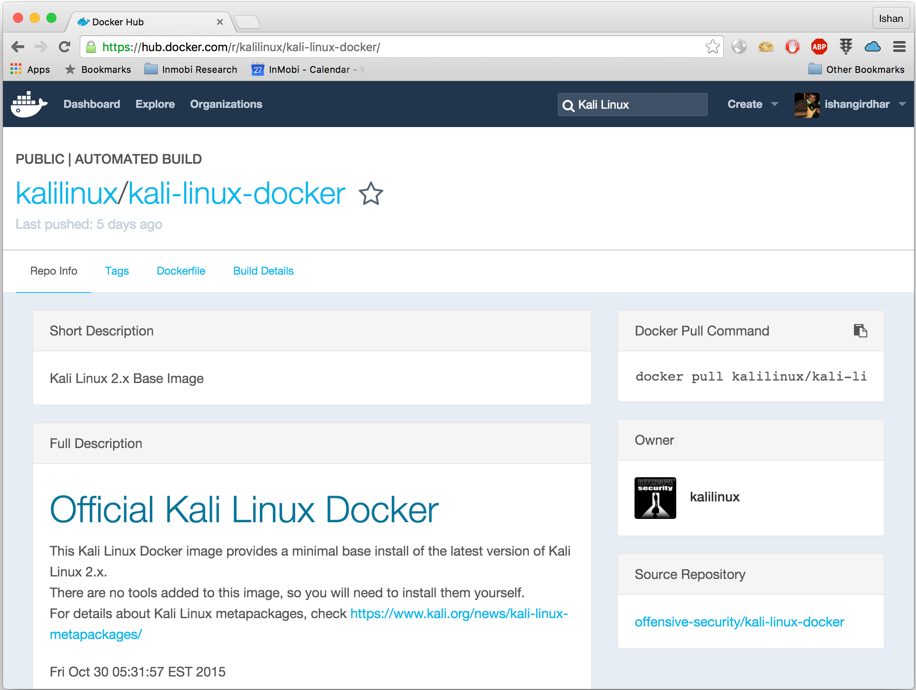
They will be updated as I learn more or change the process. These notes are kind of rough and based on much of my exploration. $ docker run -t -i kalilinux/kali-rolling /bin/bash This will create a new Docker image named my-kali (choose the name as per your choice). Tooling (that I still need to explore in more detail) If you want to create the container with you choice name, then first copy the CONTAINER ID as shown above and now run following command.

The steps from this point forward should be re-run each time you start Kali Linux in this Docker Container (the run command below). # apt-get update & apt-get install metasploit-framework $ docker run -ti -rm -v /Users/bob.fornal/Projects/pentest/root:/root -v /Users/bob.fornal/Projects/pentest/postgres:/var/lib/postgresql kalilinux/kali-rolling /bin/bash

Here are the abbreviated notes I put together. The running container will have its own file system, networking stack, and.

THIS ARTICLE IS INTENDED PRIMARILY FOR MYSELF. To spin-up a container from an image, you need to use the docker run command. With some quick searching I found that they already had Kali Linux dockerized. I was thinking of setting up a machine to explore when a co-worker mentioned building a Docker Container with Kali Linux inside it. Kali Linux was mentioned and I started looking at what this meant.


 0 kommentar(er)
0 kommentar(er)
